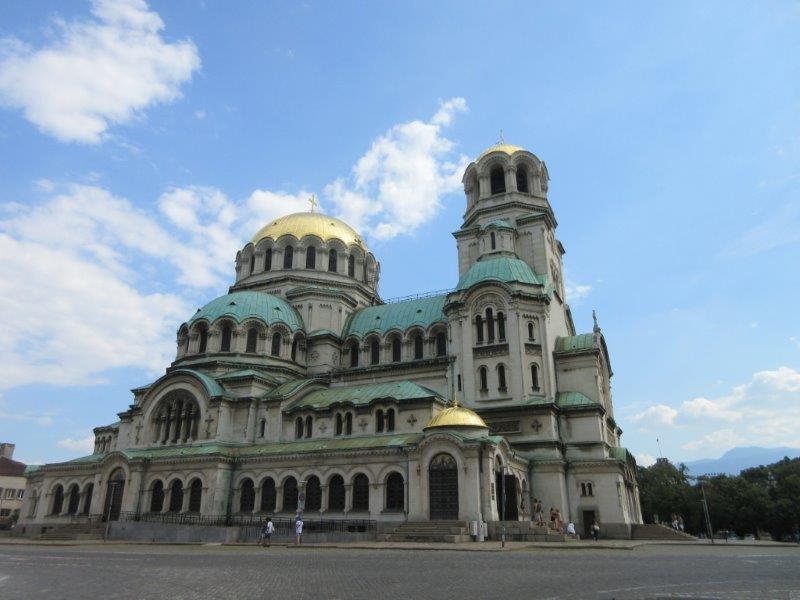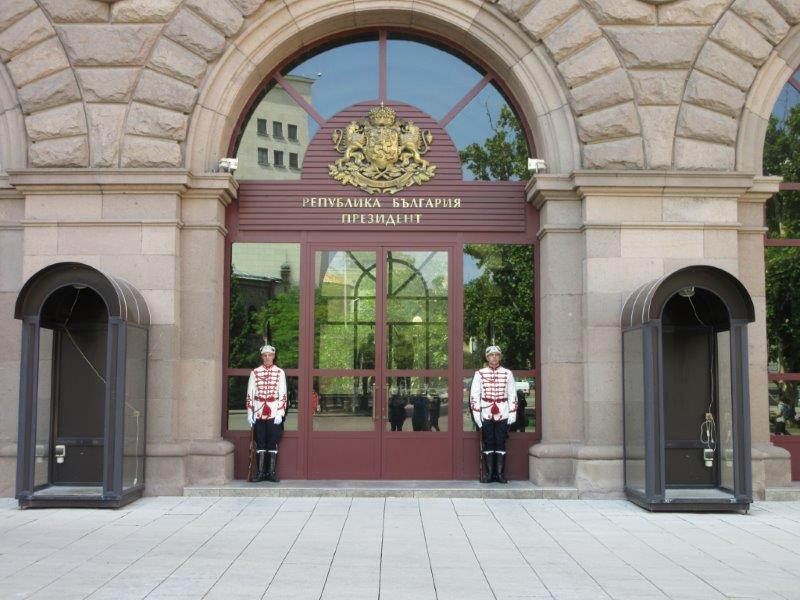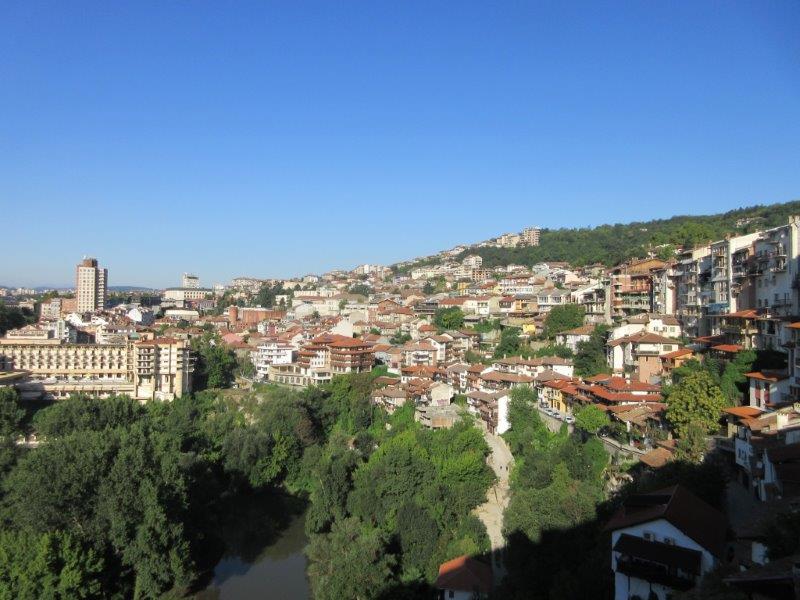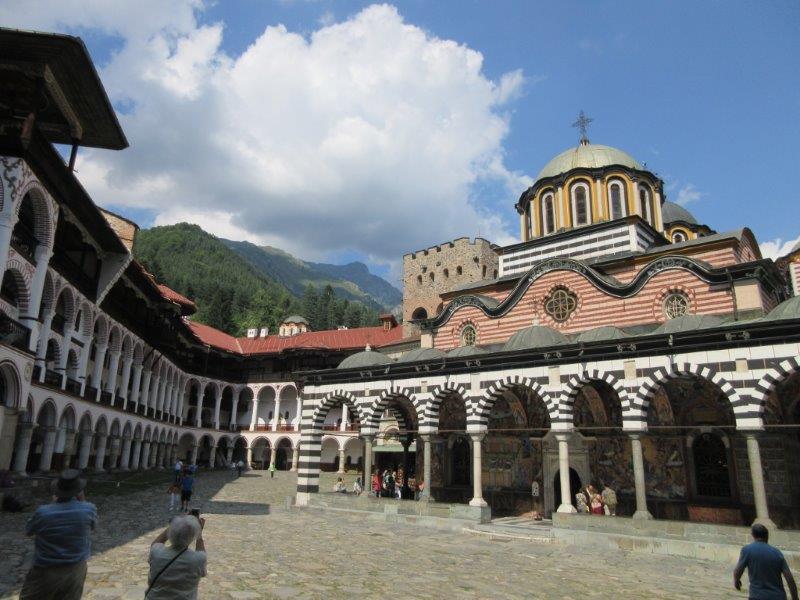For decades after the Second World War Bulgaria lay firmly behind the Iron Curtain but now this fascinating and hospitable country has opened up once again and we are delighted to be able to visit a wide range of well-preserved archaeological sites, three of which are UNESCO World Heritage Sites. These are the famous Rila Monastery, set high in the mountains; Boyana Church with its outstanding frescoes; the historic town of Plovdiv, which can trace its roots to a Neolithic settlement of around 4000BC. Further highlights include the Kazanluk Thracian Tomb, and Veliko Tarnovo, the mediaeval capital of Bulgaria with a stunning location above the Yantra River.
YANT Holiday Archives 2018
Holidays Organiser: Peter Drew 01904 702285 holidays@yant.org.uk
Other 2018 Holidays
- Mallorca
Bulgarian Archaeology
7th – 14th August, 2018
Holiday Review: Bulgarian Archaeology
7th – 14th August, 2018
On arrival in Sofia we visited the museum beneath St Sofia Church which features the remains of tombs, mosaics and artefacts dating back to Byzantine and Roman times on several underground levels. The 6th century Basilica was situated in the middle of the main necropolis of the Roman town of Serdica, the remains of which we saw on our tour of the city. These included the ruins of the amphitheatre discovered during the construction of a hotel and now preserved and incorporated into the ground floor.
We visited the Alexander Nevski Cathedral, an Eastern Orthodox cathedral built in the Neo-Byzantine style and the National Museum of History which houses objects connected to archaeology, fine arts, history and ethnography. The building itself formerly the residence of the dictator and last communist leader was architecturally stunning. In the Boyana Church we saw 13th century frescoes which are one of the most complete and perfectly preserved collections of eastern European medieval art.
The museum town of Koprivshtitsa with its cobbled streets and many colourfully painted National Revival buildings had been the home of several leading revolutionaries. Here we immersed ourselves in authentic Bulgarian architecture viewing houses which contained collections of ethnographic treasures, art, fine fretwork, household weaves and embroideries. A peaceful atmosphere was to be found in the Troyan monastery with its ornately painted interior and exterior and central cobbled courtyard lined by wooden balconies be-decked with flowers.
Veliko Tarnovo sits in a picturesque hillside setting high above the meandering Yantra River dominated by the ruins of the majestic hilltop fortress of the Tsarevets which we explored, a vantage point almost continually occupied from the 4th millennium BC. We were entertained in the homes of local families in the village of Arbanassi and visited the Church of the Nativity with its 17th century interior of strikingly colourful murals depicting saints and biblical scenes. In the Church of the Archangels Michael and Gabriel we were treated to an evocative and moving a cappella recital of Eastern Orthodox songs by a male quartet.
The Etura Open Air Ethnographic Complex, a reconstructed village where craftsmen work with wood, metal, clay, silver and cloth gave us a fascinating insight into 19th century town life. The Valley of the Thracian Kings where royalty and nobility were buried in elaborate stone tombs which were sealed and covered with earth was a holy place in ancient times. We visited a replica of the Kazanluk tomb with its splendid horse murals dating back to the 4th century BC, one of the best preserved artistic masterpieces from the Hellenistic period. The valley is also famed for its rose farming and we saw aspects of this more recent history in the Museum of the Rose-Oil Industry.
We explored the old town of the ancient city of Plovdiv which traces its roots back to the 5th millennium BC with its steep cobbled streets, colourfully rendered houses and Roman ruins including an impressive amphitheatre. Our final visit was to the Rila Monastery high in the mountains with its unique architecture of stone arches, colonnades, covered wooden stairs and carved verandas founded early in the 10th century and named after the hermit St Ivan of Rila who lived in a cave nearby. This once wealthy, cultural and spiritual centre houses an impressive museum of art works.
A fascinating mixture of archaeological sites, historical towns, outstanding architecture and beautiful landscapes combined with wine and Turkish coffee tasting, local folk music and dancing, fine dining, knowledgeable guides and the good company of our fellow travellers all made for an excellent holiday.
Anne Richardson
Holiday Itinerary: Bulgarian Archaeology
7th – 14th August, 2018
from £1,495
Tuesday 7 August 2018
We depart this morning from York by coach to Manchester Airport in time for our direct flight to Sofia (provisional flight times: dep 0700/arr 1220). On arrival we will be met by our coach and transfer to the city centre. This afternoon we will visit the Underground Museum. This unique museum is located under the ‘St Sofia’ church. On the four underground levels below the basilica visitors can see 56 tombs and four churches, one which dates back to the 4th century AD. We also visit the ruins of Ancient Serdica, a Roman amphitheatre. We will then continue to our hotel, where a welcome drink and dinner will be served in the evening.
Wednesday 8 August 2018
After breakfast we visit the National Museum of History here in Sofia, which will give us a good introduction to our tour of Bulgaria. We then visit the Boyana Church, a UNESCO World Heritage site. The east wing of this two-storey Orthodox Church was originally constructed in the late 10th or early 11th century, the central wing was added in the 13th century under the Second Bulgarian Empire, and the whole building was finished with a further expansion to the west in the middle of the 19th century. The church is notable mainly for its frescoes from 1259, which form a second layer over the paintings from earlier centuries and represent one of the most complete and well preserved monuments of Eastern European mediaeval art. In the afternoon we will see the Alexander Nevski Memorial Cathedral, the 6th century Basilica of St. Sofia, Parliament Square, the National Theatre, and the old city garden, the 4th century St. George Rotunda (the oldest preserved building in Sofia), and the Presidency. In the evening we enjoy dinner with a folklore performance and Nestinari show (UNESCO-listed dance with bare feet on burning coal).
Thursday 9 August 2018
Today we depart for Koprivshtitsa, one of the most famous museum-towns in Bulgaria, declared a national historical and architectural reserve, one can still feel the spirit of the Bulgarian National revival. Narrow cobbled streets, arch-like bridges, stone fountains, high-stone walls with big gates, leading to picturesque houses create an inimitable romantic atmosphere. We continue to Troyan Monastery, the third largest monastery in Bulgaria, followed by a wine tasting in Liaskovets winery, the first factory for sparkling wines in Bulgaria, est. 1863. It features a museum collection and Roman vine-press from the 3rd century AD. We will then proceed to Veliko Tarnovo, our overnight stop for tonight. Dinner is served in the evening.
Friday 10 August 2018
Today we visit the hill fortress of Tsarevets, which served as the Second Bulgarian Empire's primary fortress and strongest bulwark from 1185 to 1393, housing the royal and the patriarchal palaces. There is a modern reconstruction of Baldwin’s Tower, located on the site of the original medieval tower where Emperor Baldwin I of Constantinople, the Manager of the 4th Crusade, supposedly met his death as a prisoner of Kaloyan of Bulgaria. Later we walk along Samovodska Charshia Street of Crafts, Gurko Street and see the Monument of Assenevtsi in the Yantra River, followed by a visit to Arbanassi museum village nearby. Here we will enjoy a private concert of Eastern Orthodox music in one of the medieval churches in Arbanassi (20 minutes), along with a demonstration of preparation of coffee on sand and tasting of white jam. We enjoy lunch with a local family in Arbanassi and a lesson in the preparation of traditional Bulgarian yoghurt and a tasting of traditional Bulgarian pastry with white cheese (banitsa). Dinner is served back at our hotel in Veliko Tarnovo.
Saturday 11 August 2018
Today we check out of the hotel and head south, crossing the highest and most beautiful part of the Balkans, featuring the mountain which gave its name to the Balkan Peninsula. We will stop for a visit to Etura Open Air Ethnographic complex and proceed to Shipka Memorial pass and visit the church here. Later we continue to Kazanlak, the centre of the Valley of Roses, known as the ‘Valley of the Thracian Kings’. Here we visit the Museum of Roses and Kazanluk Thracian tomb (a replica of the original site 50m away). All visits to the original Kazanluk Thracian tomb UNESCO site have been stopped to preserve the future of the site; the tomb dates back to the 4th century BC and is part of a large Thracian necropolis, comprising a narrow corridor and a round burial chamber, both decorated with murals representing a Thracian couple at a ritual funeral feast. The murals are notable for the splendid horses and especially for the gesture of farewell, in which the seated couple grasp each other's wrists in a moment of tenderness and equality. The paintings are Bulgaria's best- preserved artistic masterpieces from the Hellenistic period. A replica of the tombs architecture and its fresco decoration can be found in the nearby museum. We also visit another Thracian tomb before continuing to our hotel in Plovdiv, where dinner is served on arrival.
Sunday 12 August 2018
Today we have a morning city tour of the Old Plovdiv Architectural Reserve, awarded the gold medal for architecture by UNESCO, along with the Ethnographic museum, St. Constantine and Helena Church, the Ancient Amphitheatre and the Old Pharmacy. Then we visit Kapana artistic neighbourhood of Plovdiv (designated European Capital of Culture in 2019) and walk along the longest pedestrian street in the world. In the afternoon we go to Brestovitsa village for a visit and enjoy a wine tasting at a boutique wine cellar. We then return to Plovdiv for free time in the centre of this historic city, which can trace its roots back to a Neolithic settlement of around 4000 BC. Dinner is served in the evening.
Monday 13 August 2018
Today we visit our final UNESCO site, the famous Rila Monastery. A particularly scenic journey takes us high in to the Rila Mountains - the Monastery itself is at a height of 3763 ft above sea level. Founded early in the 10th century, it was named after the hermit Ivan of Rila (876-946 AD), who lived in a cave nearby. Since its creation, the Rila Monastery has been supported and respected by the Bulgarian rulers, large donations were made by almost every tsar of the Second Bulgarian Empire up until the Ottoman Conquest, making it a cultural and spiritual centre of Bulgarian national consciousness that reached its apogee from the 12th to the 14th century. Our tour of the monastery includes the old kitchen, the museum and the main church. We then return to our hotel in Sofia and in the evening we walk to a nearby local restaurant for our farewell dinner.
Tuesday 14 August 2018
There will be some free time for shopping and sightseeing before we transfer to the airport for our return flight to Manchester (provisional flight times: dep 1305/arr 1435). On arrival we return by coach to York.
Included in the price
• Seven nights’ DBB in 3 and 4 star hotels: three in Sofia, two in Veliko Tarnovo, two in Plovdiv
• Return flights from Manchester to Sofia
• Return coach York to Manchester Airport
• Comfortable coaching in Bulgaria
• All fees to monuments and museums as detailed
in the itinerary, including Veliko Turnovo, Kazanlak, Karanovo, Plovdiv and Rila Monastery
• Local English speaking guides
• Services of a Brightwater Holidays specialist guide
• Porterage / Gratuities / Welcome drink
Not included (per person)
• Single occupancy supplement £120.00
• Insurance TBA

























